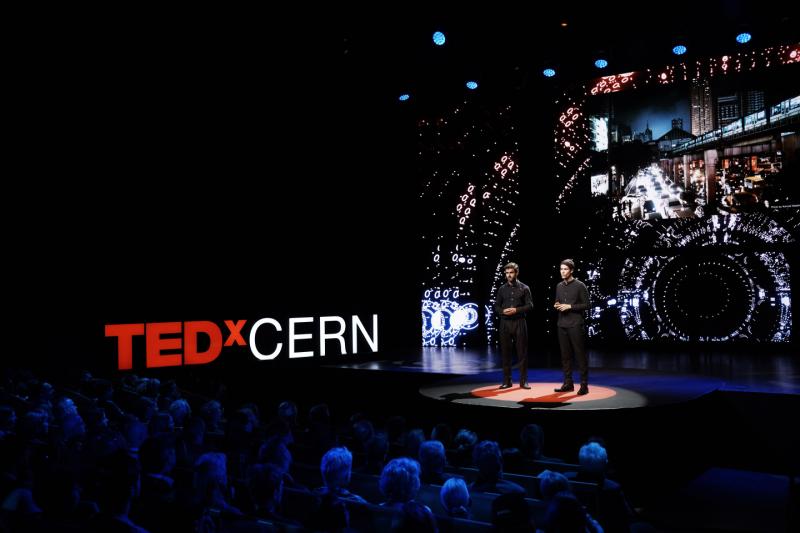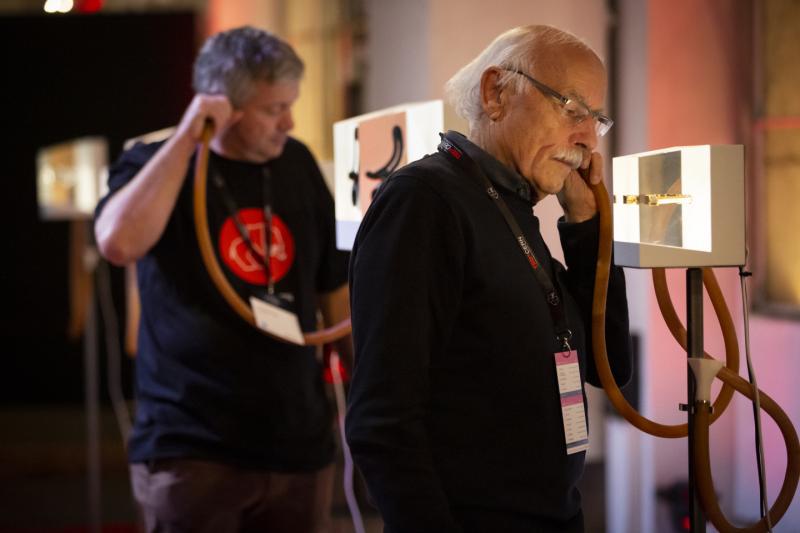
The “Elephant in the room” theme was matched by a carefully crafted script on burning issues and positive ways to address them. Never shying away from controversial questions and the risk aspects of each topic, the event highlighted the necessity for wise design and regulation of the technology we develop, rather than fearing progress.
The first session was themed around the question “Will we destroy ourselves?” and combined a number of talks on issues of the digital age. Sinan Aral opened the show by approaching political, economic and health impacts of social media on society. He raised questions around “fake news” and the way we consume information. "Who gets to decide in society what's true and what's false? And who's checking the fact-checkers?" he asked. Later on, documentary-makers Hans Block and Moritz Riesenwieck cross-examined content moderation and its moral implications. Shermin Voshmgir, blockchain expert and director of the Research Institute for Crypto Economics at the Vienna University of Economics, discussed how cryptocurrencies are revolutionising the digital world. Maja Pantic gave an overview of Emotional Artificial Intelligence and the promises and risks of machine learning. Joanna J. Bryson concluded the first session’s talks with a psychological framing of AI and its intimate relationship with the human mind.

Janice Chen, biologist and CRISPR pioneer from the University of California, Berkeley, opened the second session, with the question “Will we create new selves?” as its theme. She envisioned a future in which CRISPR, a genome editing technology, could provide real time diagnostics and potentially head off epidemics. The following speaker, Sanushka Naidoo discussed the potential of new biotechnology tools to address plant responses to pests and pathogens and possible solutions for the future of world-food production and sustainability. “Genetic Modification is a biotechnology that can benefit the hungry and the poor, but it is not accessible due to regulations based on fear and ignorance”, she said. Another topic at the heart of the session was the Anthropocene and the future of the Earth. Elena Bennett, a systems ecologist, provided a positive insight into the way humanity could pursue sustainable development by focusing on a conscious behaviour towards the environment. “It is time for us to start thinking about a radical and inspiring future", was her rallying call.

NASA astrophysicist, Dawn Gelino, explained the challenges linked to research on exoplanets. “There are more stars in our little galaxy than grains of sand in all of our beaches. We are small and insignificant in a vast universe,” she said in her mind-blowing talk on space exploration. Juan Enriquez, renowned TED speaker and life scientist, untangled some of the mysteries of today’s biology and genetics. “The new biology is proactive. Instead of looking for things, we are able to build them. What do we do with this stuff? Well, programmed life forms are going to change the world,” he claimed, adding that “we might only be one to two decades from generating life from scratch.”
To complete the futuristic charm of the show, Kevin Ramseier, Thomas Köppel and François Moncarey of CENC (Centre for numeric and corporal expression) engaged in a marvellous game with digital tools and the laws of physics, by creating a video dance performance where the dancer controls the visual and auditory matter, which they shaped into frequencies, oscillations and vibrations.
In conclusion, the 2018 edition of TEDxCERN was incontestably a success and reached an unprecedented audience – over 900 present in the room and around 3000 watching the webcast from 32 different locations around the world.
"TEDxCERN is a very powerful opportunity for putting across and engaging citizens in cutting-edge science, be it the science we do at CERN or research in other fields. It is very positive to see CERN taking a leading role in highlighting the “elephant in the room” aspects, promoting and mediating these discussions. It is strongly in line with the mission of the Lab of being a voice for fundamental research and its impact on society.” - Ana Godinho, CERN’s Head of Education, Communications & Outreach.
Stay tuned in the following weeks to watch the video recordings of each talk. In the meantime, enjoy the event in images here.